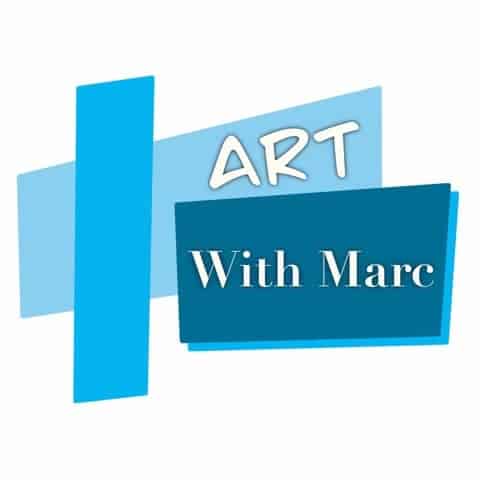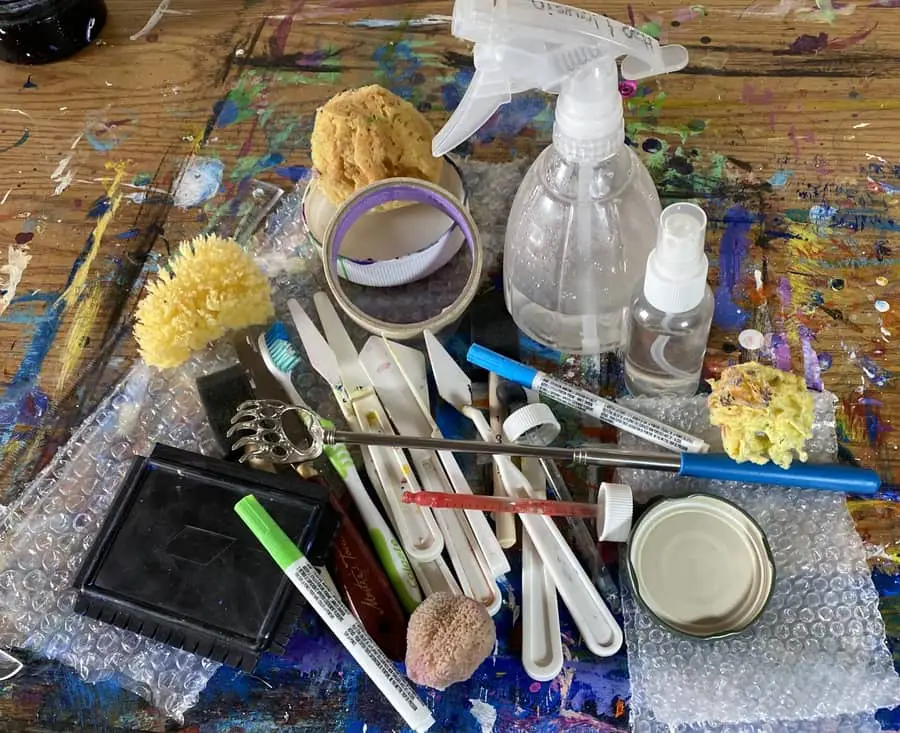
As an abstract painter, I have picked up a few techniques in the past year that I can share with you. I am always on the hunt for new techniques to try and new tools to add to my collection though.
Soon you will be too!
Here are some abstract painting tools you will want to be aware of and start collecting as soon as possible:
- Masking Tape
- Bubble Wrap Of All Sizes
- Stencils
- Paint Rollers
- Palette Knives
- Texture Mediums
- Pouring Mediums
- Squeegee
- Sponges
- Spatulas
- Balloons
- Cups, Bottle Caps, Lids
- Spray Bottles
- Squeeze bottles
- Eye Droppers or Pipettes
- Paper Towels, Aluminum Foil, Plastic Wrap
- Catalyst Wedge, Blades, and Polytip Brushes
- Home Made Tools
This list of tools wasn’t made in any particular order and some of these tools are more commonly used than others. What you end up using the most will depend on what sort of art you like to create.
The following list of techniques using these tools though I tried to put in order of the ones I use the most down to the ones that I have yet to try.
Get ready! This is the point in your art development where you become one of those kooky people who starts collecting all kinds of weird things in the name of art!
“Hey! Don’t throw away that bubble wrap! I can use that!”
I have explored and experimented with many of these tools but I’m super excited to collect and try out the rest!
The major thing that clicked into place for me while writing this article is the importance of texture in abstract painting. Most of the tools and techniques in this guide will give you a variety of textured results.
One of my goals with this page is to open up our minds to the possible tools we can use in our work. Abstract painting is all about exploration and experimentation!! Don’t be afraid to try things!
Related Articles:
- What Makes a Good Abstract Painting? The Principles of Art
- 17 Abstract Artists On Instagram That Will Inspire Your Art
- 10 Abstract Artists on YouTube to Study and Learn From
- 10 Artists Who Wield a Palette Knife With Mastery (Study The Best!)
- Making Abstract Geometric Art For Beginners
Abstract Painting with Masking Tape
Masking tape strikes again! Just when you think it can’t get more useful you realize it is also an art tool!
It is one of my personal favorite tools to deploy in an abstract painting. I first saw the technique being used by John Beckly on YouTube. After I saw the ways that he uses it I of course had to give it a try myself.
In the above video, Beckley actually demonstrates a number of the tools and techniques we cover on this page.
One thing you can do, that you will often see Beckley do too, is use it to keep the borders of your painting clean. This gives your finished painting a nice effect if you don’t plan to frame it and want to hang it on the wall as is.
Masking tape is a good way to get crisp lean lines where you want them or even shadows through a bit of dry brushing. (A technique further down the page.)
It is a great tool to get geometrical patterns and shapes worked into your painting or to simply cover up a piece of the canvas you don’t want to get paint on.
Palette Knives In Abstract Painting
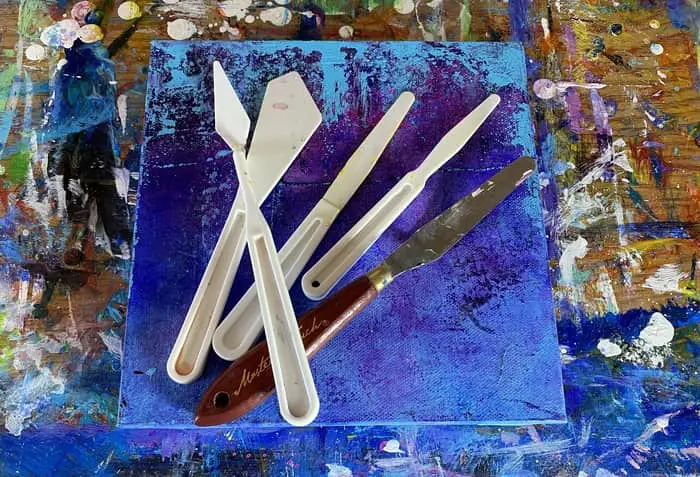
Palette knives are another fantastic tool in the abstract painter’s arsenal.
In abstract painting, they are a great tool for getting textures to your painting. While there are a variety of ways to add texture to your painting you can get an interesting result just through paint and palette knife alone.
Some artists, like Leonid Afremov, use the palette knife as adeptly as a brush. Creating vibrant abstract images with just the tip of their knife. He did most of his work in the oils medium though.
Others use it to apply the paint to the canvas in a uniquely textured way and then brush out the edges like what can see the artist Ray Grimes doing on YouTube.
To get a better idea of how one can use palette knives better check out this page I wrote on palette knife artists here!
That said, palette knives are pretty much as essential to an artists supplies as paint brushes are. The cheap plastic ones are just as good as the fancy metal ones too.
Abstract Acrylic Painting with Texture

Abstract acrylic painting with texture is done in a variety of ways. We already discussed how palette knives can be used with thick paint to accomplish various textures but that is just the tip of the iceberg.
Using your brushes themselves are a great place to start! Whatever brushes you have you can use to get different types of brushstroke textures into your paintings.
Thick coarse brushes are really good for this. You can load multiple colors on to one brush and then leave a thick multicolored brush stroke.
Better than brushes and palette knives though we have a variety of options to add texture to the canvas.
When it comes to prepping the canvas with texture gesso is a great place to start as it is something a lot of artists generally have on hand. While it’s primary purpose is as a primer if you add it thick enough you can get textures out of it.
There are also mediums specifically designed to give you a variety of textured results. That is going to take a whole different page to cover in the appropriate depth but something like the Liquitex Texture Gels are a great way to get additional textures into your painting.
There are many options to choose from as well as a number of homemade concoctions we can try as well. I certainly want to take some time to explore them all thoroughly!
The Dry Brush Technique

This technique is used in acrylic paintings of all kinds but is especially useful in abstract works.
This is when you take a dry brush and barely put any paint on it at all then you work it on to the canvas. This applies the paint in a very very thin and transparent coat.
The dry brush technique is often used in combination with various masking techniques such as using masking tape or stencils.
It is a great way to add shadows and various other effects to your abstract painting.
Another way to use it is if you have already applied paint to your canvas that you want to have a softer look you can take a dry brush to it to help spread and soften it up.
This is a method you can even find Bob Ross using to create clouds!
Creating Splatters and Stains with the Acrylic Wash Technique
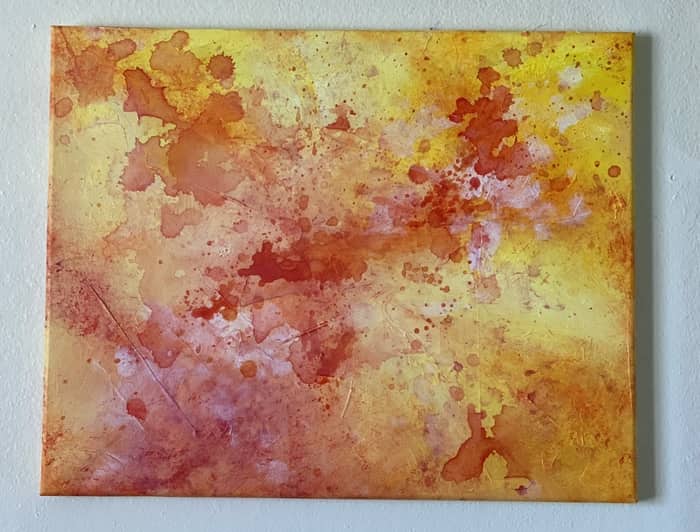
The acrylic wash technique is another really great one for abstract painting.
This is when you water down your paints to get more of a watercolor type of effect out of your acrylics.
In essence, you get a sort of staining effect from it.
Some artists will mix their wash in a squirt bottle and fling it onto the canvas that way. I generally will use a sponge that already has the color on it I want and then make sure the sponge has enough water in it.
This usually works for me but it may not provide the sort of control that one might want.
Either way, you’re basically trying to create spots and puddles on the canvas with this technique in most abstract works. Perhaps you’re looking to create a lightly visible drip effect.
A wash is good for all these effects.
Abstract Painting with Stencils
I don’t think this one needs all that much explanation to be honest.
Stencils are a great way to add neat little patterns into you works. They’re cheap and found in all sorts of shapes and patterns.
I actually have yet to add any to my tool chest yet but most definitely will soon.
Another cool thing to note is that if you have a 3D printer or access to one, there are tons and tons of free downloads available for you to make your own unique stencils.
Heck, since we are artists with design skills we could even probably figure out how to design our own stencils. Not just to be 3D printed but I’m sure we could even make our own with the right materials and a razor blade.
It doesn’t take a 3D printer to get cool tools for your collection! But it sure doesn’t hurt to have one either!
Spray Bottles, Squeeze Bottles and Paper Towels in Abstract Painting
Spray bottles, squeeze bottles, and paper towels are another series of tools I feel are essential to an abstract artists toolbox.
Having a spray bottle on hand to spritz your canvas with from time to time is useful in a few ways. Sometimes it’s good to spray the canvas down and get it wet before you start painting so the paint flows more smoothly.
It can also help create a cool dripping effect on the canvas too.
Another good way to use spray bottles is to spray tiny droplets of water onto a layer of paint and then use a paper towel to lift them off the paint bringing some of the pigments with it.
This is a technique I first learned by watching Ray Grimes. It creates this pattern of spots on the paint that looks pretty cool.
Then there are squeeze bottles which are good for getting fluid streams of paint or even writing in paint.
Abstract Painting with Plastic Wrap, Foil, Bubble Wrap
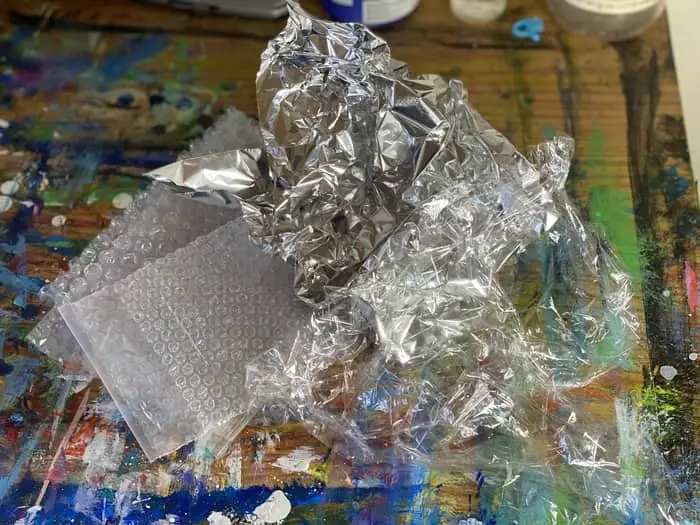
Everyday household items like plastic wrap and aluminum foil can be used in abstract works for blending.
While the plastic wrap is flimsy and flexible it folds in ways that leave an interesting pattern in the paint. The foil having hard folds and cutting edges too will have a distinctive imprint to leave behind.
The most common way they are used in abstract painting is to blend two colors into each other and create an interesting pattern in the paint while doing so.
Another technique or tool closely related to these that I personally love to use in my works is bubble wrap. Putting a bit of paint on the bubbles and then using it as a sort of pattern stamp adds a nice bit of character to your painting.
I wouldn’t use this to blend your colors like with the foil and plastic wrap, it’s more of a way to add a pattern to your canvas without the use of a stencil.
Rollers in Abstract Acrylic Painting
While a roller is something I have yet to add to my tool box, after seeing what we can potentially do with it I will definitely need to get one as soon as possible.
Just watching Mike McDonald work his magic with it in the above video has me fired up to try it myself. The way he builds the character up with each successive layer.
Laying on the paint with the roller and using the very tools we have been discussing to add dimension and depth.
I actually reached out to Mike on Instagram for some of his thoughts on abstract tools and techniques. He had some great insights to provide us with!
Art supplies can be expensive. Brushes, palette knives, canvases, paints, varnishes and mediums, it can add up fast. But there are great tools for abstract painting in places besides art stores. Look to your local hardware store or kitchen supply shop for things like icing knives, sponges, putty knives, or a cafeteria tray to use as a paint palette. Look for anything you can use to creatively apply paint, even things like lab pipettes (for splatters and drips) or sheets of deli plastic ( for applying paint with a textured effect)”
Mike McDonald
Mike was even kind enough to show us an array of his favorite tools to use. Check it out!
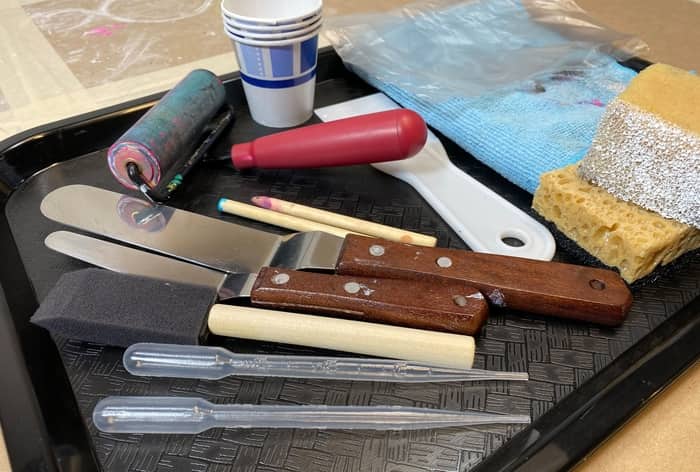
For more awesome content from Mike check out and subscribe to his YouTube channel here!
There are a few different types of rollers you can get. There is the sponge roller and the rubber roller. Then there are rollers of various shapes and patterns.
You could even take a flat roller and glue stuff to it to give it different textured effects when it rolls.
In general rollers are another great tool for getting various different textures and blends.
The rubber roller will get you one type of textured effect while the sponge roller offers an alternate result. Both effects are really great for abstract painting, blending, and textures.
Abstract Acrylic Painting with a Spatula
This one is somewhat of a mystery to me. I’m including it here because it is something people are searching for.
From what I can tell, it seems spatula may be another term used for palette knives perhaps in other parts of the world. That said, I find the idea interesting of using an actual spatula to paint with.
By that I mean the kind you use in cooking to mix something like cake batter.
I can imagine that this tool would indeed produce some unique effects on the canvas. I’m sure it would be very similar effects as a palette knife might get but I think it is worth including to further open up our minds to the potential tools available to us in our everyday lives.
Once we start recognizing the everyday items we can use it will open up a world of new possibilities!
Abstract Painting with a Sponge
The sponge is another one of my favorite tools to use. It is a really great tool to use for blending colors smoothly.
With a sponge getting a gradient between two colors becomes a lot easier.
Better than that, the porous nature of the sponge is a good way to get some neat textures when you have paint that is laid on the canvas slightly thicker.
It is also a good way to get a bit of a wash or add some transparency to your paint too. When the sponge is damp or holding a bit of water you can use one side to dab the paint on and rotate the sponge to a side without paint to help spread the pigments out further creating a thinner layer.
Whenever I want to add colored splatters or washes to my painting I then will get the sponge a bit wet and squeeze it out where I want the wash effect.
Paint Markers in Abstract Works
Paint markers come in a number of sizes and a variety of tips allowing for a diversity of mark-making options.
Ranging from a fine point with a brush tip to a fat flat marker type of tip you can get a variety of marks into your painting.
From highlights to random cursive writing the control that paint markers give you allows for some very specific uses.
John Beckly often uses a fat ended marker tip with a straight edge to add straight lines into his works.
Alternatively, Ray Grimes uses markers to add swirls and twists into some of his paintings. I’m not sure his markers are actual paint markers though.
For more information on acrylic paint pens and markers check out this article I wrote here!
The Squeegee Painting Technique
Using a squeegee in your abstract works will bring a couple of different options to the painting table.
One way to use squeegees is with fluid acrylics. Suraj Fine arts has a couple of videos demonstrating how you can create this stain effect on the canvas using some fluid paint and a squeegee.
This makes perfect sense as squeegees are really designed to move fluid around like that. The effect you get on the canvas depends on where you laid your paint down at.
John Beckly demonstrates ways to use the squeegee technique with thick layers of paint creating a variety of textures and mixtures.
You can get similar effects from other straight edges like cardboard, palette knives, scrapers, and really anything with a hard straight edge. That said, the rubber edge of the squeegee does have an aspect to it none of those other alternatives have.
Catalyst Wedges, Blades and Mini-Blades

The catalyst wedge is another one of those abstract painter essentials to have.
Like with many other tools on our list there are several options to choose from.
There are the Princeton Catalyst Contours and Wedges. These are the larger kind that fit in your hand. With 6 different variations made of flexible silicone they can be great for making unique marks in your abstract works.
One way to use a catalyst wedge in your abstract art is to paint onto a wet canvas with a paint brush and then use your catalyst wedge to create create swoops. This will gave you a very neat abstract effect.
Then there are the Princeton Catalyst Blades and Mini Blades that are more like mini catalyst wedges on a paintbrush handle.
With the control of a brush and the effect of a catalyst blade a world of opportunity awaits the innovative artists that has these tools.
Abstract Acrylic Painting with a Cup
If you’re searching for abstract acrylic painting with a cup you’re likely looking for how to do an acrylic pour or what’s commonly referred to as a flip cup.
Is that the only way we can use a cup in abstract painting though? I think not!
Another option is to use it as stencil to get a perfect circle!
Alternatively, for a different type of fluid art we could go for a Jackson Pollock type of work. This is similar to acrylic pouring in that you need a medium to help make your paint more fluid but instead of pouring it out all at once you drip it onto the canvas.
A more contemporary artist who paints like this is my friend Sheeba Khan. I have previously written about her here. Sheeba is an abstract expressionist based out of Dubai
Psst…just between me and you, I like her work way better than Pollock’s. That’s just me though.
I may be biased. I think she was literally the first connection I made in the art world when I first started doing this some months back. We actually initially met on LinkedIn. Don’t sleep on LinkedIn! (that’s another topic though)
Abstract Acrylic Painting with a Balloon
I have seen the balloon used in a couple of different ways in abstract paintings.
The most common thing to do is a balloon dip or acrylic pour. This is basically a type of acrylic pour where you pour out your background or base color onto the canvas.
Once you have that laid out you then pour your colors you want into a small puddle.
Then once the puddle is on the canvas you smash the balloon into it and it creates this neat mixing effect on the paints.
I believe I once saw a video where the person used the balloon to create these bubble effects on the canvas. Unfortunately I can’t seem to find that video at the moment.
Pretty much all content online related to this subject is the balloon dip.
